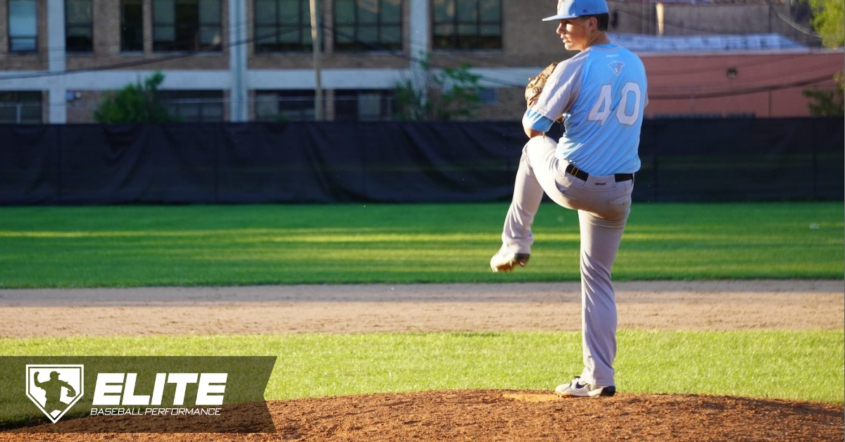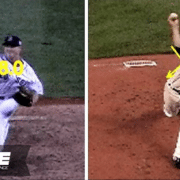Two Common Curveball Mistakes Pitchers Should Avoid
As a youth baseball coach, I spend a significant amount of time shaking my head at easily taught aspects of the game that go overlooked. When youth pitchers begin throwing curveballs—somewhere between the age of 12 and 15, typically—they embark on a long journey with mastering what is a very difficult pitch to get right.
I advocate learning a curveball at 14 or 15—not younger—yet admit that it takes a long time to develop the pitch properly. The reality is that pitchers need a high-quality breaking ball by the time they are 16 if they want a chance at being recruited to pitch in college. When taught properly and given consistent coaching and feedback, a pitcher can learn to develop a solid curveball in 6-12 months. My 15U team this year had a fantastic season using a curveball for the first time, just a year after I taught it to all my pitchers.
Does a curveball in the repertoire help a young pitcher succeed in the short term? Sure—the brains of 12-year-old hitters simply can’t figure out the physics to help them make consistent contact against even bad breaking balls.
However, I am steadfast in my belief that this stunts long-term development of pitchers, as they learn to rely not on command and a changeup (both of which they’ll need later on in their careers) but rather just flipping in a curveball whenever they’re in a jam. This is not the way.
Yet, when it becomes time to learn the pitch, it can be a very difficult process. In today’s article, I’ll share two tips that I see most pitchers struggle with—how to locate the curveball, and how hard to throw it.
Tip #1: How Hard Should You Throw Your Curveball? As Hard As Possible!
I recently watched a very polished 15U pitcher throw against my teams with excellent mechanics, command and fastball velocity. “This kid’s going to be good!” I said to myself. Then, I saw his curveball for the first time. I cringed. He threw it way too softly, eased off it, and showed a nervousness about throwing it full speed. If only he saw himself on video, he’d agree that:
- He slows his arm down significantly
- Sinks into his front leg, causing his arm to get beneath the ball and float it upward
- Doesn’t finish the pitch, easing off his follow through for fear of bouncing it
This is very common and understandable—the curveball is harder to control than a fastball, so pitchers mentally try to ease off and just toss it in there. Finding the right curveball grip for you is also important in being able to throw it as hard as possible.
The problem is that when a curveball is thrown at less than 100% intensity, it will “pop up” out of the hand, making its trajectory look very different to a hitter. Though young hitters aren’t good at recognizing this at first, they start to pick it up well in high school and beyond.
To keep the curveball looking like a fastball the longest, a pitcher has to throw it at 100% intensity, often trying to mentally throw it harder than the fastball, even.
Learn more about how hard to throw the curveball, including how much slower it should be and more in the video below.
Tip #2: Use Focal Points to Locate the Curveball
The curveball doesn’t fly straight…duh, right?
Well if it doesn’t fly straight, then why does every young pitcher who throws one stare right at the catcher’s mitt?
As pitchers, we have to place our eyes on a focal point where we want the pitch to start, not end up. With the fastball—because it’s straight—this location is the same. Yet with all types of pitches with break, including curveballs, sliders, sinkers, cutters, changeups, etc.—we have to account for the break.
This means that if your curveball breaks 12 inches straight down—and you want it to end up at the catcher’s mitt—you should choose a point to focus on that is 12 inches above the mitt, and basically try to “start” your curveball there. This makes sense, right?
Yet, many pitchers either never learn this, or learn it very late. I learned it when I was 20 years old, pitching in summer baseball after my sophomore year at a small Division-I school. This tip is HUGE yet overlooked, just as it was in my development.
For illustrations showing what this looks like, watch the video below. Using focal points can change everything!
Improve Your Curveball Using These Two Tips
These two tips discussed today can make a huge difference, as they both address mistakes I see on a daily basis. If a pitcher is easing off his curveball, hitters will hit it hard. And for those who have trouble locating, using focal points will give a concrete way to improve command.
Want to Learn More From Coach Dan?
Check out Dan’s two pitching books on Amazon, along with a list of his other favorite pitching and mental training books.
Learn more about the curveball in his guide on how to throw a curveball.
And, sign up for his weekly newsletter here, where you’ll get his newest videos and presentations sent to you as soon as they’re released.
Dan Blewett
Latest posts by Dan Blewett (see all)
- What Causes A Mental Meltdown in Baseball? - September 3, 2019
- Two Common Curveball Mistakes Pitchers Should Avoid - July 30, 2019
- Is Heavy Lifting Good For Pitchers? - July 2, 2019






Trackbacks & Pingbacks
[…] who can throw a pitch that runs all over the plate will always be appealing to me. A great and a bad curveball have a distinct distinction. A pitcher can almost never master a great curve. There are several […]
[…] Two Common Curveball Mistakes […]
[…] Two Common Curveball Mistakes […]
Leave a Reply
Want to join the discussion?Feel free to contribute!